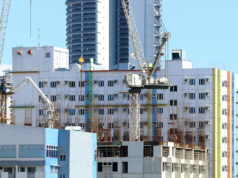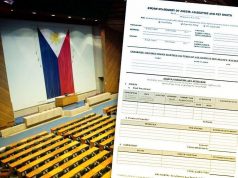NEDA sees food logistics as possible counter for inflation
A POLICY RATE hike may not address rising inflation, the National Economic and Development Authority (NEDA) said, with the authorities looking at “more robust” solutions on the supply side such as building food terminals to serve highly urbanized areas.
“Actually, a lot of inflation we’re seeing is due to supply constraints, supply issues. So the strategy to address this has to do with supply, not demand, which cannot be addressed via an increase in interest rates,” NEDA Undersecretary for Policy and Planning Rosemarie G. Edillon said during a briefing yesterday on the economy’s performance for the first quarter.
Headline inflation averaged 4.1% in the first four months of the year after peaking at 4.5% last month, breaching the central bank’s 2-4% target band. Socioeconomic Planning Secretary Ernesto M. Pernia called the rise in prices a “spoiler,” adding that gross domestic product growth would have been within the government’s 7-8% target after a 6.8% expansion in the first quarter if it weren’t for the uptick in inflation.
Nine of 11 economists polled by BusinessWorld said that they expect the Bangko Sentral ng Pilipinas to tighten its policy stance at its May 10 meeting.
Apart from alcoholic beverages and tobacco Ms. Edillon noted that the “problem in inflation” was due to higher prices of food, particularly the “rice, fish, meat, and vegetable subsector.”
“Therefore you are looking at inefficiencies post-harvest. Inefficiencies in the processing, in transport, logistics, and trade even,” she said.
Ms. Edillon said economic managers are looking at the possibility of setting up food terminals outside metropolitan areas to streamline the movement of goods.
“So I think in the immediate term, what we need to do is to study the feasibility of putting up food terminals in the outskirts of highly urbanized cities because the problem is really this problem of trucking, the truck ban, the traffic,” she said.
“If we have food terminals where food cargo from large container trucks can be transferred to smaller vans and they can be distributed across the city 24/7 not constrained by the truck ban, that would make for more efficient logistics,” she added.
Ms. Edillon said possible locations outside Manila, Cebu, Davao, and Baguio are being considered.
The NEDA Board approved last month a P1.09-billion agri-industrial food complex in Davao to improve value chain development. But Ms. Edillon said NEDA is considering similar, but relatively “scaled-down” projects, to hasten the implementation process.
“If they’re very small projects, in fact even LGUs (local government units) could do it. Even the DTI (Department of Trade and Industry) and the DA (Department of Agriculture) have funds for shared service facilities,” Ms. Edillon said.
She said food terminals would complement efforts to move rice to a tariff system, allowing the private sector to import the staple grain.
Amendments to Republic Act (RA) No. 8178, or the Agricultural Tariffication Act are currently at committee level in the Senate and will go before the plenary in the House. This measure is expected to lower retail prices of rice by about P4-7 per kilo.
Ms. Edillon also said one more approach could be to resolve legal hurdles to land ownership, to make idle land productive.
“If you go around the country, and even here, in the vicinity of Metro Manila, you see a lot of idle land in subdivisions. The problem is there’s so many regulatory constraints with respect to the use of the land,” she said.
“So these ones will have to be addressed so they can be brought to cultivation… The surest way to address food inflation is to have more food. But the problem is available land. That means looking at the regulatory framework,” Ms. Edillon added — Elijah Joseph C. Tubayan



